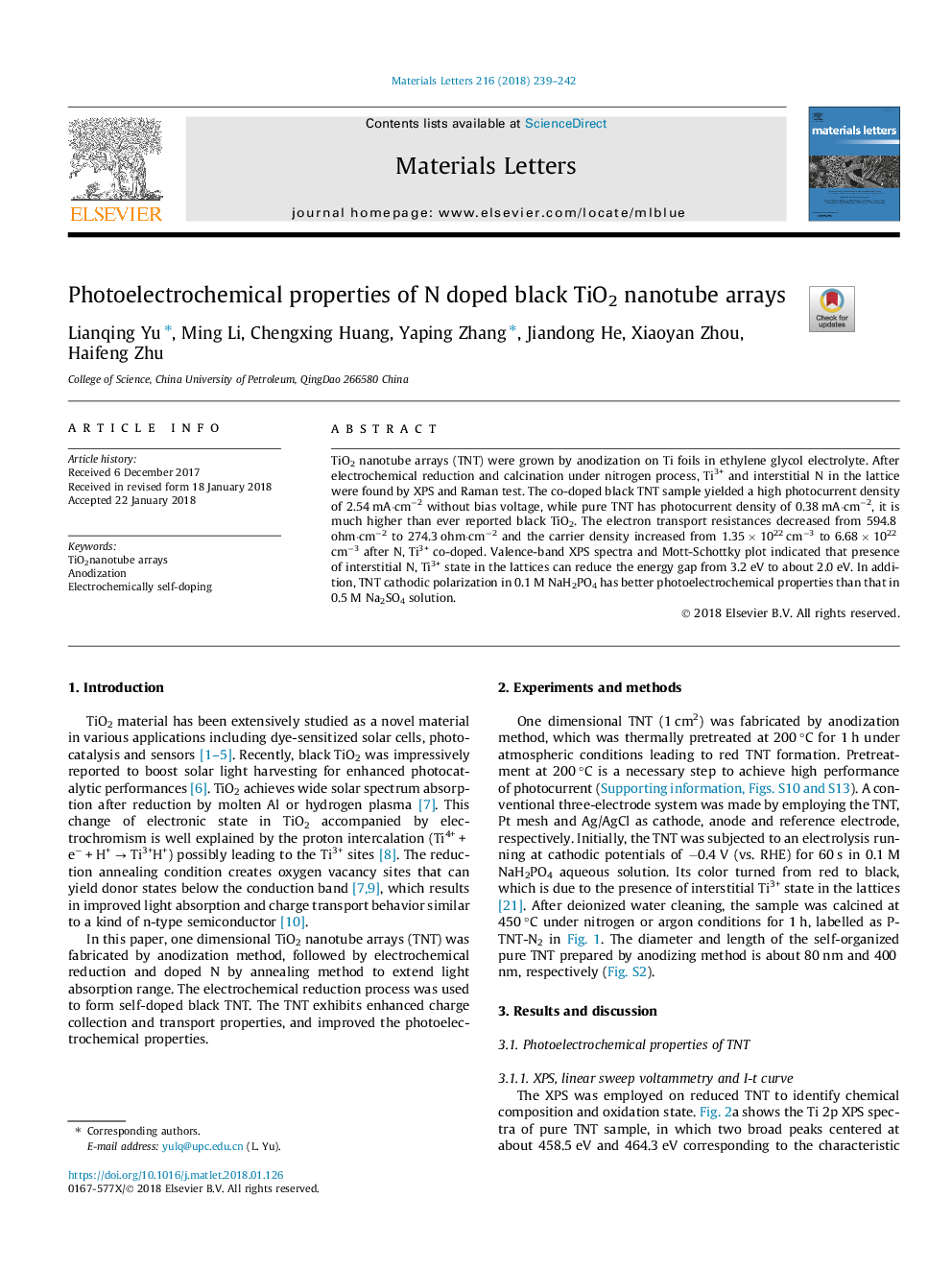| Article ID | Journal | Published Year | Pages | File Type |
|---|---|---|---|---|
| 8014664 | Materials Letters | 2018 | 4 Pages |
Abstract
TiO2 nanotube arrays (TNT) were grown by anodization on Ti foils in ethylene glycol electrolyte. After electrochemical reduction and calcination under nitrogen process, Ti3+ and interstitial N in the lattice were found by XPS and Raman test. The co-doped black TNT sample yielded a high photocurrent density of 2.54â¯mA·cmâ2 without bias voltage, while pure TNT has photocurrent density of 0.38â¯mA·cmâ2, it is much higher than ever reported black TiO2. The electron transport resistances decreased from 594.8â¯ohm·cmâ2 to 274.3â¯ohm·cmâ2 and the carrier density increased from 1.35â¯Ãâ¯1022â¯cmâ3 to 6.68â¯Ãâ¯1022â¯cmâ3 after N, Ti3+ co-doped. Valence-band XPS spectra and Mott-Schottky plot indicated that presence of interstitial N, Ti3+ state in the lattices can reduce the energy gap from 3.2â¯eV to about 2.0â¯eV. In addition, TNT cathodic polarization in 0.1â¯M NaH2PO4 has better photoelectrochemical properties than that in 0.5â¯M Na2SO4 solution.
Keywords
Related Topics
Physical Sciences and Engineering
Materials Science
Nanotechnology
Authors
Lianqing Yu, Ming Li, Chengxing Huang, Yaping Zhang, Jiandong He, Xiaoyan Zhou, Haifeng Zhu,
